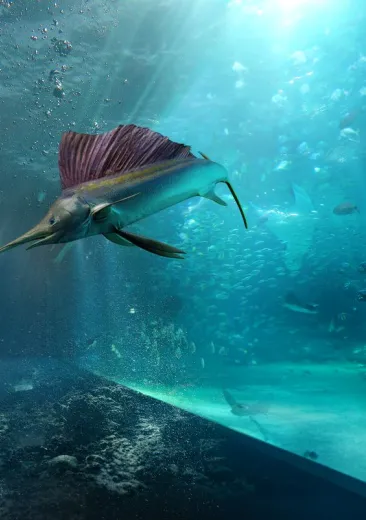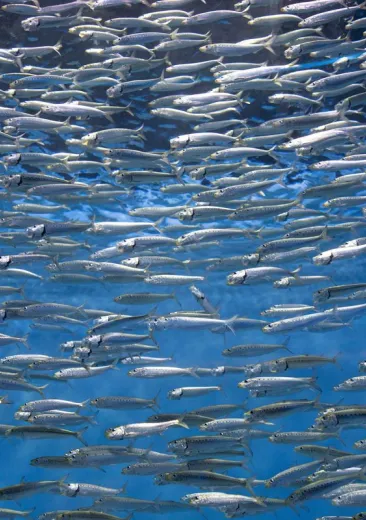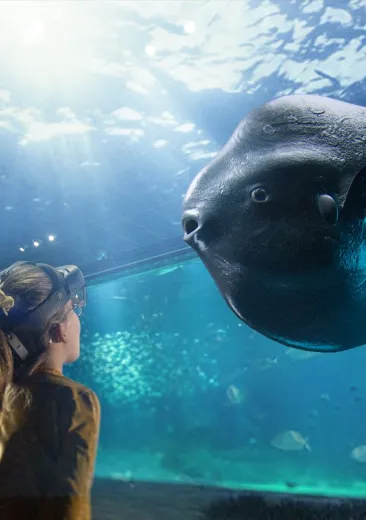Where is the animal to be found?
Despite their size, jellyfish are a type of plankton, that’s to say they drift along with the ocean currents. They live in the open sea, usually at depths not exceeding 20 metres, but the winds and currents can carry them towards the coast.
This jellyfish is found in the Arctic polar circle in the northern Pacific (from Japan to California) and in the northern Atlantic (in the St-Lawrence, to the north of the United States and to the north of Europe). In France, it can be found in the English Channel and the North Sea.
How can it be recognised?
The lion’s mane jellyfish, Cyanea capillata, owes its name to its great number of very fine hair-like tentacles. Furthermore, the Latin word capillata means hairy. There are four undulating oral arms in the middle of these tentacles (sometimes as many as 800!).
The diameter of its bell varies between 50 to 100 cm; in the coldest waters, the diameter can be as large as 2 metres. This means that the lion’s mane jellyfish is one of the biggest jellyfish in the world.
The bell is divided into 8 lobes which alternate with eight rhopalia, which are the jellyfish’s sense organs. The colour of these jellyfish varies with their age: juveniles are pink or yellow, and their colour becomes darker as they grow older, turning red or a brownish orange.
There are millions of cnidocytes on their tentacles. These are stinging cells which, when they come into contact with their prey (or the skin of a bather), trigger a minuscule stinger that injects their venom. This is how jellyfish paralyse their prey: fish, crustaceans and other jellyfish. They are then taken from the tentacles to the oral arms to the mouth.
What is distinctive about it?
The lion’s mane jellyfish have a painful sting, above all once they have reached their maximum size, that is to say at the end of the summer and in the autumn. Even when beached, jellyfish tentacles may continue to have a sting for several hours. This species is thought to be less dangerous off French coasts.












